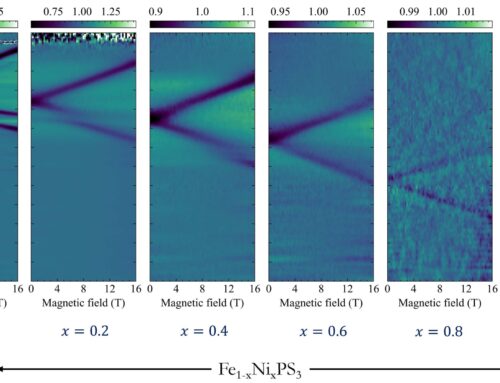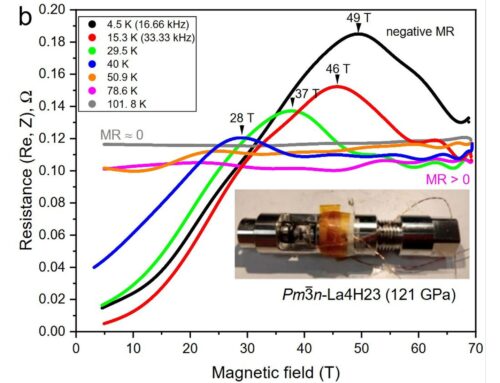Caitlin Duffy, Nigel Hussey, and Sven Badoux, HFML-FELIX Nijmegen.
A team of researchers from HFML-FELIX has developed an experimental set-up capable of generating stable, intense current pulses in conjunction with high magnetic fields for studying the electronic ground state of various unconventional superconductors, whose upper critical fields are beyond the field strength of the facility. Unconventional superconductivity often occurs in the vicinity of an ordered state, the maximum transition temperature Tc occurring at or in close proximity to a quantum critical point (QCP) associated with the suppression of this ordered phase.
Quantum fluctuations associated with this order are believed to be the dominant contribution to normal-state scattering (and hence dc resistivity) as well as the dominant pairing interaction. Elucidating the form of the dc resistivity in the limiting low-T region around this putative QCP can, therefore, serve as a pivotal test of such claims. Invariably, however, their upper critical field Hc2 occurring is also maximized at the QCP and can exceed the maximum field strengths available at a facility. The remarkable strength of these superconducting (SC) states is, thus, both an asset and a hindrance, and a complete overview of the low-T non-superconducting ground state and its evolution across an entire SC dome is presently lacking for many of the most important and widely studied families of unconventional superconductors.
Disorder can often weaken the superconductivity of a given material, but the introduction of disorder may also obscure the intrinsic physics. An alternative means of suppressing superconductivity is the application of current densities J > Jc, though the potentially adverse self-heating effects generated by these large currents can cause irreversible damage in the sample. The use of short (μs) pulses can mitigate this problem to some extent by allowing heat relaxation between successive pulses, though studies of unconventional superconductors using such short current pulses are few and far between.
In response to this, our team at HFML-FELIX sought a means of overcoming existing limitations using a compromised approach, in which short current pulses are combined with field strengths H < Hc2. The operation of an experimental set-up capable of generating stable, intense current pulses with amplitudes up to 500 mA was then demonstrated on two cuprate families – YBCO and LSCO. Combining the current pulse set-up with a magnetic field of 24 T, we were able to suppress completely the superconductivity in a LSCO thin film with Tc ≈ 20 K and nominal μ0Hc2 ≈ 36 T. The set-up can be used with static magnetic fields reaching 35 T in a temperature range of 1.4 to 300 K and shows the potential of the high-current/high-field combination to explore the non-SC ground state, specifically the normal-state magnetotransport properties of robust superconductors that were previously inaccessible due to their high upper critical fields.

Figure: (Left) Typical oscilloscope traces of a 20 μs pulse from the pulse generator (blue), the reference (green) and the sample (red). (Middle) Slopes of the rising and falling sections of the same sample signal, indicating that decay of the signal is due to capacitive coupling rather than heating. (Right) Suppression of the SC transition in an LSCO thin film with nominal Tc ≈ 20 K and μ0Hc2 ≈ 36 T with current pulses in a field of 24 T.
Pulsed current set-up for use in magnetic fields above 30 T; application to high-Tc occurring superconductors, C. M. Duffy, T. M. Huijbregts, D. Juskus, B. Bernáth, R. J. Cool, J. F. G. Roesthuis, A. Brinkman, N. E. Hussey, and S. Badoux, Instrum. Sci. Technol. 53, 317 (2025).
https://www.tandfonline.com/doi/full/10.1080/10739149.2024.2388059
Contact: nigel.hussey@ru.nl






